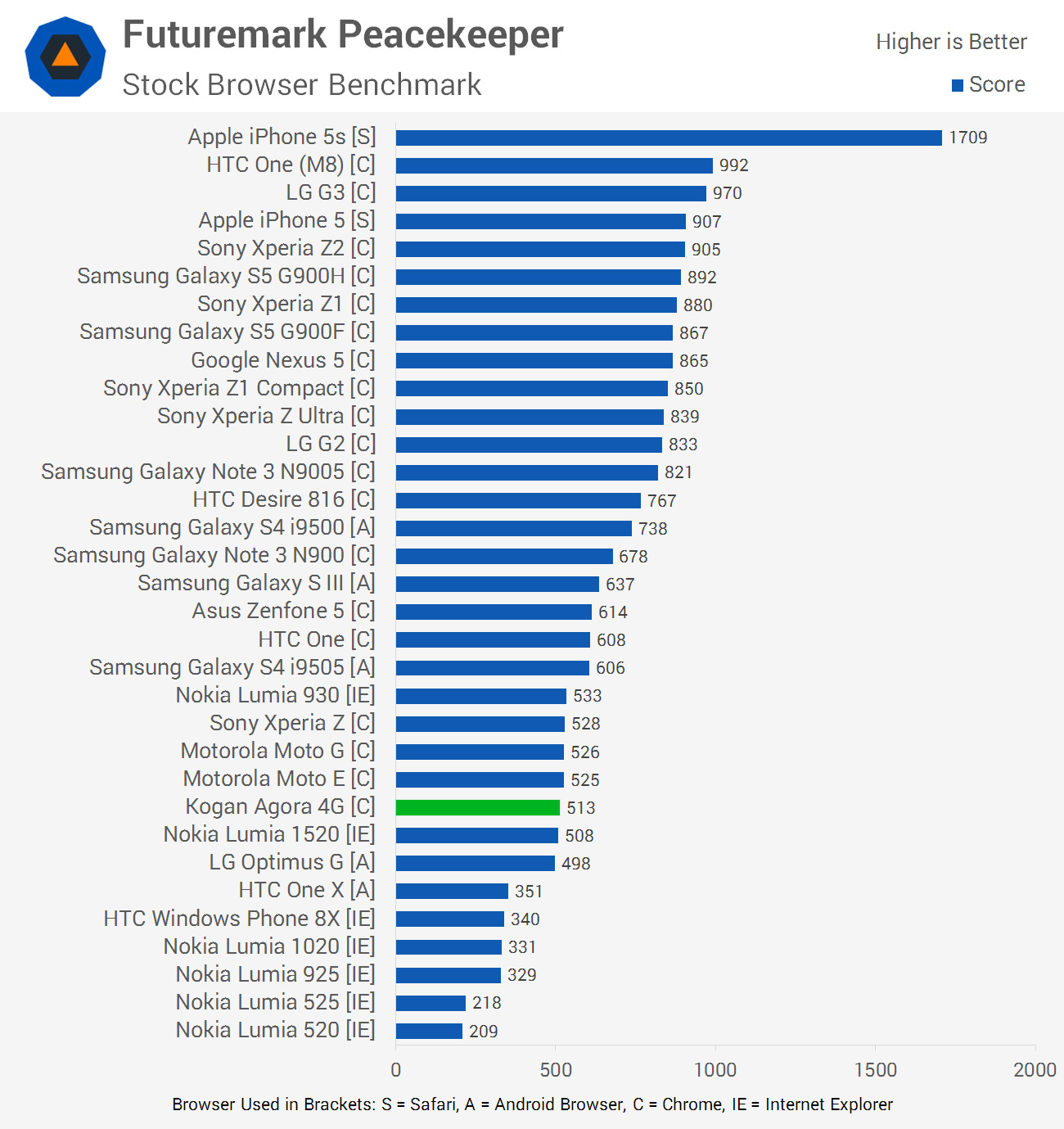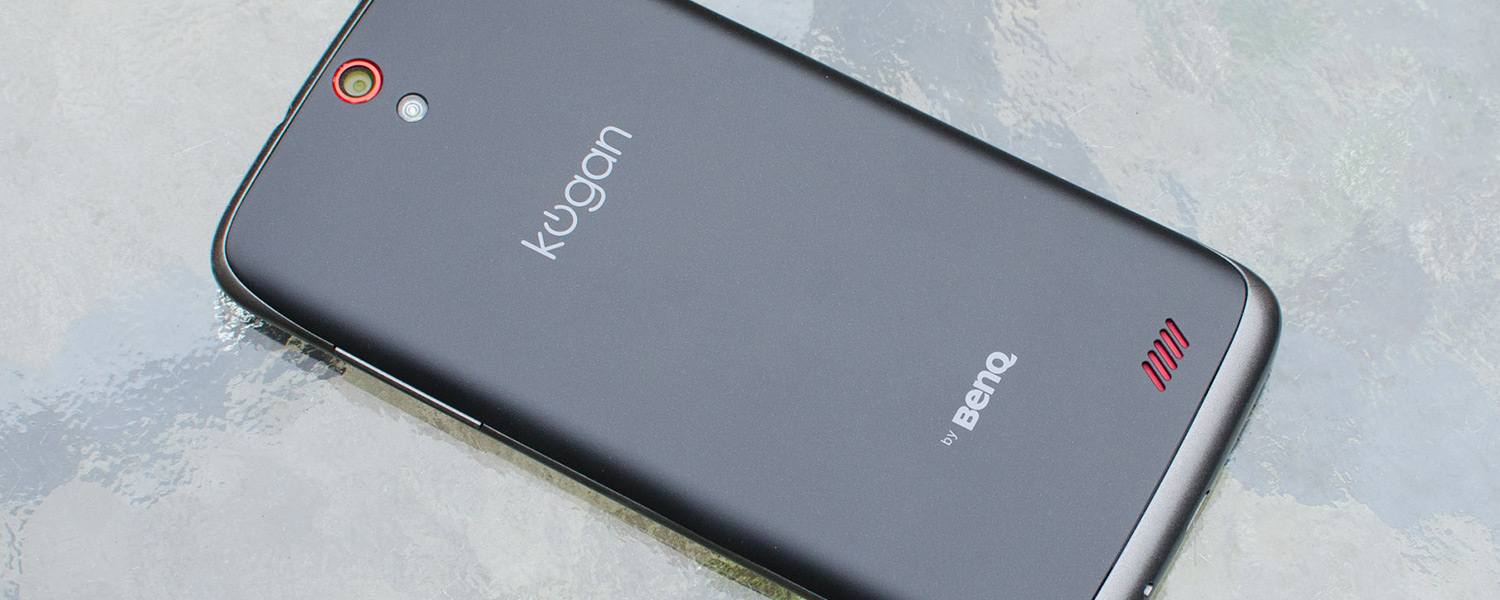Snapdragon 400 Performance
Like many smartphones of this class, the Kogan Agora 4G uses a Qualcomm Snapdragon 400 SoC. The particular model in question is the MSM8926, which is very similar to the MSM8226 used in both generations of the Moto G, except with LTE support. The MSM8926 is paired with 1 GB of RAM and 8 GB of internal NAND, complemented by a microSD card slot.
This particular variant of the Snapdragon 400 uses four ARM Cortex-A7 CPU cores clocked up to 1.2 GHz. It also includes an Adreno 305 GPU at 450 MHz, an LPDDR2 memory controller, single-band Wi-Fi 802.11b/g/n, A-GPS, the usual array of 2G radios, tri-band HSPA+ (2100, 900 and 850 MHz) and tri-band LTE.
It's disappointing to find that the Agora 4G only supports three LTE bands: 700, 900 and 1800 MHz. This is fewer than many flagships, which typically pack support for five LTE bands or more; the LG G3 for example also packs 800, 2100, 2300 and 2600 MHz support. However, the three bands that the Agora 4G does include will be enough for usage in Australia and some European/Asian networks (1800 MHz), and limited North American usage (700 MHz).
As always, check with your carrier to make sure the Agora 4G is supported on its LTE networks before making a purchase. I would have liked to see 1700 MHz support for greater North American support, and 2600 and 800 MHz for full European support, though you can't expect all the bands to be supported on a sub-$250 device.
As expected, the Agora 4G performs well in most tasks, providing a smooth operating system experience, decently fast web browsing, and enough grunt for gaming at 720p. Obviously it's not going to have the raw power of a flagship, so opening apps and switching between them won't be as snappy, but for an everyday device it'll satisfy most users. Stock Android helps in this respect as well, as it doesn't bog down the handset with heavy skins or features.
Benchmarks for the Agora 4G can be found below. It performs essentially identically to the original Moto G, which is a Qualcomm Snapdragon 400 device, and falls generally in the range of other mid-range handsets.











One notable outlier is NAND performance, which in terms of sequential read and write is above average. This is surprising for this type of device, and welcome.

In our new value index, the Kogan Agora 4G presents slightly better value than flagships on performance alone. However it falls behind the Asus Zenfone 5, and likely would fall behind the Moto G as well if I could calculate a value score for it (I can't as not all the necessary benchmarks have been completed). Ideally the Agora 4G would be slightly cheaper to present great value in the sub-$250 market.
When it comes to storage, 8 GB of internal NAND is understandably limiting, with the Agora packing just 5.53 GB of usable space out of the box. This might be a concern if you're a heavy app user and don't want to push apps to your SD card, however you do have the option of expanding memory through removable storage. For a device like this, that microSD card slot is an important inclusion.

